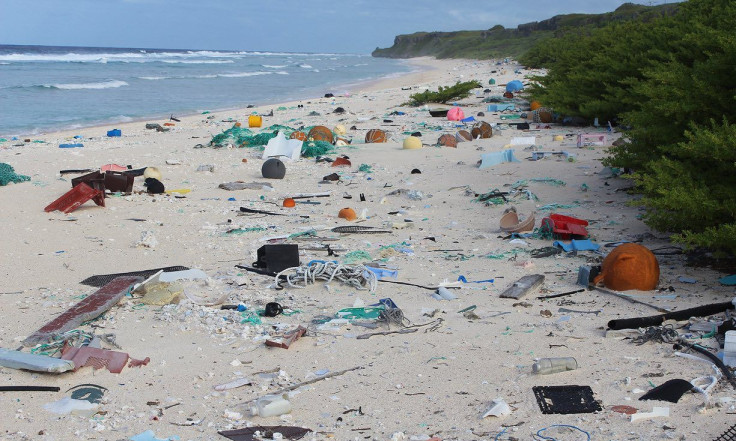Plastic Pollution: Millions Of Pieces Litter Beach On Uninhabited Pacific Ocean Island

Plastic pollution is so pervasive that even one of the most remote places on Earth, an uninhabited island in the South Pacific Ocean, is choked with litter.
On Henderson Island’s beach, “the density of debris was the highest recorded anywhere in the world,” research published in the journal Proceedings of the National Academy of Sciences showed. In some places, there were nearly 700 pieces of debris in a square meter of beach although the average was a few hundred per square meter on the surface. Thousands more pieces were buried in the 10 centimeters of sand underneath.
Read: Can These Special Caterpillars Solve Plastic Bag Pollution?
The island, a territory of the United Kingdom, is a UNESCO World Heritage Site, with 10 plants and four birds native to it.
“An estimated 37.7 million debris items weighing a total of 17.6 tons are currently present on Henderson,” with more pieces washing up every day, the researchers found.
The island is far from civilization — the University of Tasmania explained in a statement that only researchers visit, with sometimes several years between trips — but ocean currents make sure plastic pollution reaches the island from places like South America. When people don’t recycle plastic, its buoyancy and durability helps the plastic product survive long trips through waterways before it washes up somewhere.

Its particular position among ocean currents means Henderson Island takes a beating when it comes to garbage washing up on its shore.
While being so isolated may have previously protected this island from pollution, the study said, demand for plastic products has increased over time and the material has become common in marine environments where it can last without breaking down for decades.
“Far from being the pristine ‘deserted island’ that people might imagine of such a remote place, Henderson Island is a shocking but typical example of how plastic debris is affecting the environment on a global scale,” lead author Jennifer Lavers said in the University of Tasmania statement. “Plastic debris is an entanglement and ingestion hazard for many species, creates a physical barrier on beaches to animals such as sea turtles and lowers the diversity of shoreline invertebrates.”
Read: Photos of What the U.S. Looked Like Before Environmental Protection Laws
While the scientists have suggested plastic pollution at a higher density than anywhere else in the world, this may not even be the entire picture: It’s possible the litter data is a low estimate for plastic pollution coverage on the island, because the team only dug 10 centimeters down into the beach.
Previous research suggests that between 4 million and 12 million tons of plastic make it into the world’s oceans each year.
And as more plastic is produced worldwide, it further will affect places like Henderson Island, and the animals that call it home.
“What’s happened on Henderson Island shows there’s no escaping plastic pollution even in the most distant parts of our oceans,” Lavers said.
© Copyright IBTimes 2024. All rights reserved.





















